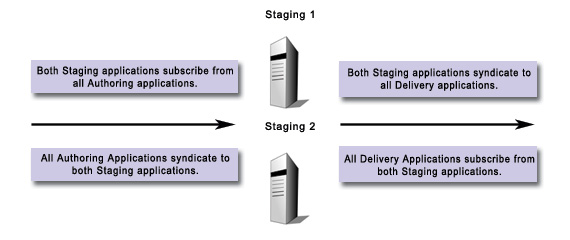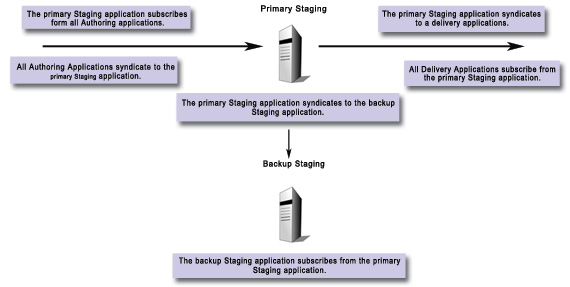Portal Express, Version 6.0
Operating systems: i5/OS, Linux, Windows
Built-in redundancy
Syndication can be used to supply built-in redundancy to a group of Web Content Management applications.
Example 1: Automatic redundancy
In this example, a pair of Staging applications are used to syndicate between authoring and delivery applications. Syndication is enabled on both staging applications to each authoring and delivery application. This means that each staging application contains the same data. If one staging application goes down, data continues to be automatically syndicated from the authoring application to the delivery application via the remaining staging application.
This architecture is useful when you are continuously syndicating between authoring, staging and delivery applications. This automatic redundancy structure could also be applied to a set of authoring or delivery applications.

Example 2: Manual redundancy
In this example, a primary Staging application is used to syndicate to a Delivery application. This primary Staging application also syndicates to a backup application. If the primary Staging application goes down, you can manually switch to the backup Staging application by enabling syndication between the backup Staging application and any Authoring or Delivery applications.
This architecture is useful if you only manually "batch-syndicate" from a Staging application to a Delivery application. This manual redundancy structure could also be applied to a set of Authoring or Delivery applications.

Syndication is used as the transport layer that replicates data from one IBM® Workplace Web Content Management™ application to another. Further information can be found in Syndication.